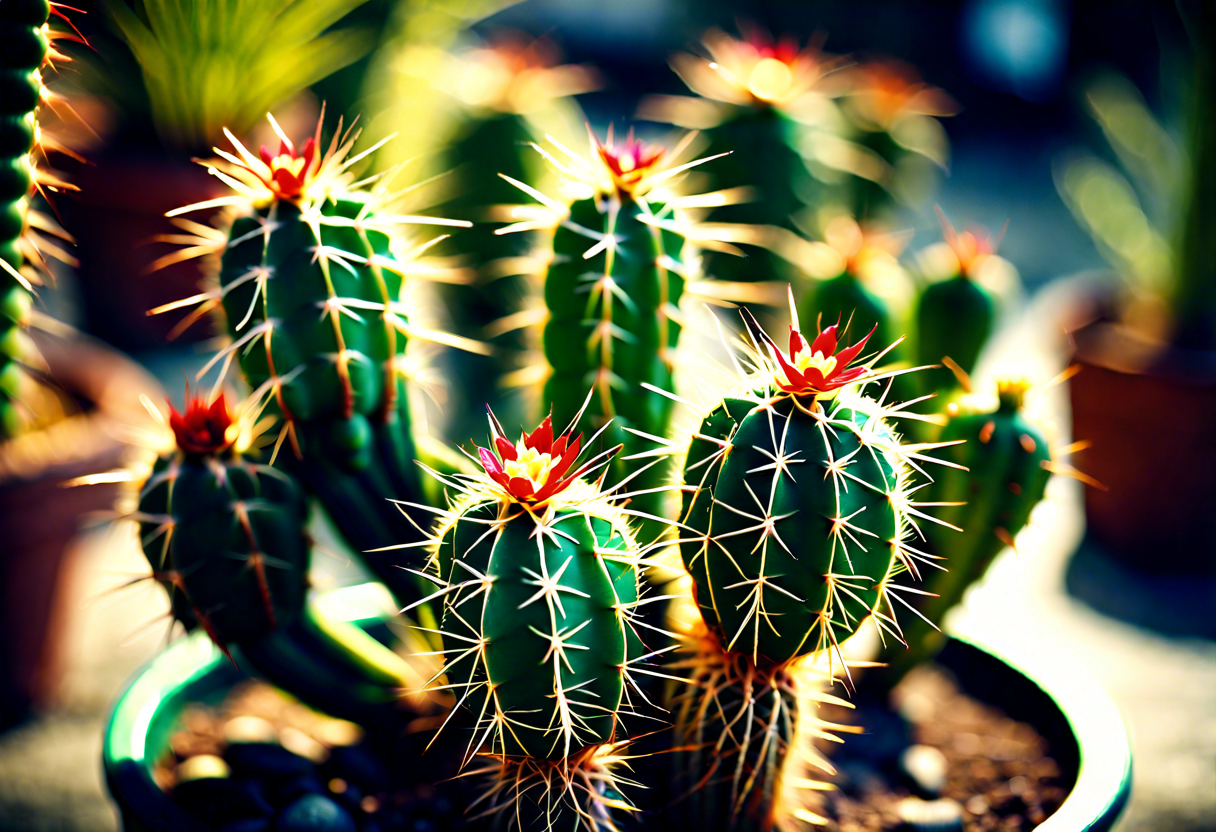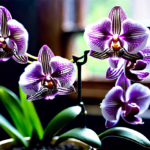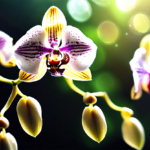Types of Cactus Species
Introduction
Cacti, also known as cactuses, are unique plants that have adapted to survive in arid environments. With their striking appearance and low maintenance requirements, cacti have gained popularity as houseplants. There are several species of cacti, each with its own distinct features and characteristics. In this article, we will explore some of the different types of cactus species, from the well-known to the rare and exotic.
Opuntia
Opuntia, commonly known as prickly pear cactus, is a genus that includes several species of cacti. These cacti are known for their flat, oval-shaped pads covered in spines. Prickly pears produce vibrant flowers in various shades of yellow, orange, and red. They are often cultivated for their edible fruits, which are used in cooking and traditional medicine.
Ferocactus
Ferocactus, also known as barrel cactus, is another fascinating species of cactus. These cacti feature cylindrical or barrel-shaped bodies covered in prominent ribs. They typically grow in a solitary manner, reaching impressive heights. Ferocactus species produce dazzling flowers in hues ranging from yellow to red. Some species, such as the popular Ferocactus glaucescens, are sought after by collectors.
Echinocactus
Echinocactus, commonly known as the golden barrel cactus, is a genus that includes some of the most iconic cactus species. These cacti feature spherical bodies covered in long, golden spines. The golden barrel cactus is popular among cacti enthusiasts due to its attractive appearance and low maintenance requirements. It thrives in full sun and well-draining soil.
Mammillaria
Mammillaria is one of the largest genera of cactus, comprising over 200 recognized species. These cacti are characterized by their small, globular bodies covered in tubercles. Each tubercle is adorned with a cluster of spines. Mammillaria plants often produce colorful flowers in shades of pink, red, and yellow. They are relatively easy to care for and are well-suited to indoor cultivation.
Notocactus
Notocactus, also known as the Parodia cactus, is a genus native to South America. These cacti feature spherical or columnar bodies covered in distinctive ribs. Notocactus species produce vibrant flowers in shades of yellow, orange, and red. They are highly appreciated by cacti enthusiasts for their unique appearance and ability to flourish in challenging conditions.
Cactus species offer a wide range of options for plant enthusiasts, from the popular and easy-to-care-for golden barrel cactus to the exotic and rare Notocactus. Each species has its own unique features and requirements, making them fascinating additions to any indoor or outdoor garden. Whether you’re a seasoned collector or a beginner, there is a cactus species that will capture your interest and bring a touch of natural beauty to your space.
Popular Species of Indoor Cacti
Introduction:
When it comes to indoor plants, cacti have gained tremendous popularity due to their unique and striking appearance. These hardy desert denizens make perfect houseplants, requiring minimal care while adding a touch of natural beauty to any space. In this article, we will explore some of the most popular species of indoor cacti.
Barrel Cactus (Ferocactus sp.):
One of the most recognizable species of cactus is the barrel cactus. As the name suggests, this cactus species takes the shape of a barrel, with ribs running vertically along its body. With their round shape, they make excellent focal points in any indoor setting. Barrel cacti come in various sizes, from petite miniatures to giants that can reach several feet in height. These cacti are known for their ability to store water, allowing them to survive in arid conditions.
Christmas Cactus (Schlumbergera spp.):
The Christmas cactus, also known as the holiday cactus, is a popular choice for indoor gardens, particularly during the holiday season. Native to the rainforests of Brazil, these cacti are unique in that they bloom during the winter months, displaying vibrant flowers in shades of red, pink, white, or purple. With their colorful display and long-lasting blooms, Christmas cacti bring a festive touch to any space. They are also relatively easy to care for, making them ideal for beginners.
Easter Cactus (Hatiora gaertneri):
Similar to the Christmas cactus, the Easter cactus is a beautiful indoor cactus known for its stunning flowers. Native to the coastal mountains of Brazil, these cacti produce delicate, star-shaped flowers in shades of white, pink, or purple during the springtime. With their cascading, segmented stems, Easter cacti create a charming display when hung in baskets or trailing over the edges of containers. They prefer slightly cooler temperatures compared to other cacti species, making them ideal for indoor cultivation.
Zebra Cactus (Haworthia fasciata):
If you’re looking for a smaller cactus species that can fit on your windowsill, the zebra cactus is an excellent choice. Native to South Africa, these compact plants have distinctive, dark green leaves covered in white stripes, resembling a zebra’s pattern, hence their name. Zebra cacti prefer bright but indirect light, making them perfect for brightening up any indoor space. With their low maintenance requirements and interesting foliage, they are popular among urban gardeners.
:
When it comes to indoor gardening, cacti offer a wide range of options. From the iconic barrel cactus to the charming Christmas, Easter, and zebra cacti, there is a species to suit every taste and space. These plants not only require minimal care but also bring a touch of natural beauty into our homes. indoor cacti into your living space can create a refreshing and visually appealing environment that is both stylish and easy to maintain. So, why not consider adding a popular species of indoor cactus to your collection and enjoy the unique beauty they offer?
Discover Rare and Exotic Species of Cacti
When it comes to cacti, most people picture the familiar prickly plants found in desert landscapes. However, there is a whole world of rare and exotic species of cacti that are lesser-known but equally fascinating. These unique cacti species showcase a diverse range of shapes, sizes, and colors, making them highly coveted by collectors and enthusiasts alike.
One extraordinary rare species of cactus is the Echinocactus grusonii, commonly known as the Golden Barrel Cactus. Native to central Mexico, this species features a spherical shape and striking golden spines, which give it a distinct appearance. It is a slow-growing cactus that can reach impressive sizes, making it a prized addition to any collection.
Another captivating species is the Epiphyllum oxypetalum, commonly referred to as the Queen of the Night. This cactus native to Mexico produces breathtaking flowers that only bloom at night, filling the air with a delightful fragrance. The white, fragrant flowers of this species have an ephemeral beauty, lasting for just one night before fading away.
For those who appreciate cacti with architectural beauty, the Ariocarpus genus offers a selection of remarkable options. Ariocarpus species are small, compact cacti with intriguing geometric patterns on their bodies. They are adapted to thrive in harsh environments and have unique ways of obtaining moisture. Their rarity and unusual shapes make them highly sought after by collectors.
The Mammillaria genus presents an array of charming and distinctive cacti species. One example is the Mammillaria spinosissima, also known as the Snowball Cactus. This species features tightly clustered tubercles covered in white spines, resembling small snowballs. During spring, it produces lovely pink or white flowers that further enhance its appeal.
One particularly unusual species is the Astrophytum asterias, commonly known as the Sea Urchin Cactus. This species stands out for its star-shaped body covered in numerous small white dots. It resembles the spiky texture of a sea urchin, hence its name. With proper care and attention, it can produce beautiful yellow flowers that contrast with its unique appearance.
Exploring rare and exotic species of cacti opens up a new world of botanical wonders. From the Golden Barrel Cactus to the Queen of the Night and the Ariocarpus and Mammillaria genera, these unique cacti offer a peek into nature’s remarkable adaptations. Their captivating features, diverse forms, and stunning blooms make them a prized possession for any cactus enthusiast.
Distinguishing features of different cactus species
When it comes to cacti, there are numerous species with unique characteristics that set them apart. Understanding the distinguishing features of different cactus species can enhance your appreciation for these remarkable plants. From variations in shape and size to differences in spines and flowers, each species showcases its own distinct traits.
One key distinguishing feature among cactus species is their shape. Some cacti grow in a columnar form, such as the iconic Saguaro cactus (Carnegiea gigantea), which can reach heights of up to 40 feet. Others, like the Barrel cactus (Ferocactus spp.), have a round and globular shape, giving them a distinct appearance. There are also cacti with a branching habit, such as the Cholla cactus (Cylindropuntia spp.), which displays multiple arms and provides a more intricate silhouette.
Another notable feature is the variation in size. Cacti range from small and compact species, like the Fairy Castle cactus (Acanthocereus tetragonus), which reaches around 12 inches in height, to larger species like the Cardón cactus (Pachycereus pringlei), which can tower up to 60 feet tall. This diversity in size allows for cacti to adapt to different environments and thrive in various geographical regions.
Spines are a prominent characteristic of cacti, and their appearance varies across different species. For example, the Golden Barrel cactus (Echinocactus grusonii) features golden spines that radiate from its center, creating a stunning visual effect. In contrast, the Old Man cactus (Cephalocereus senilis) has long, shaggy white spines that resemble a beard, giving it a unique and distinct look. Some cacti even have spines that are hooked or curved, providing them with extra protection against predators.
Cactus species also exhibit a wide array of flowers, which often bloom in vibrant colors. The Hedgehog cactus (Echinocereus spp.) produces showy flowers in shades of pink, orange, or red. The Night-blooming cereus (Hylocereus spp.) is known for its large, fragrant white flowers that only open at night, adding a touch of mystery to its beauty. These flowers not only attract pollinators but also serve as a delightful sight for human observers.
The distinguishing features of different cactus species make them fascinating subjects for admirers and collectors alike. Understanding the unique shapes, sizes, spines, and flowers of various cacti enhances the appreciation for their diversity. Next time you encounter a cactus, take a closer look and see if you can identify its distinct features, allowing you to develop a deeper understanding and admiration for these remarkable plants.
Caring for Specific Species of Cactus
When it comes to caring for specific species of cactus, it’s important to understand that different types of cacti have varying needs and requirements. From desert varieties to jungle species, each has its own unique characteristics and preferences. By tailoring your care routine to the specific species of cactus you own, you can cultivate a healthy and thriving plant that will bring beauty and joy to your home for years to come.
One of the crucial factors to consider when caring for specific species of cactus is the amount of sunlight they require. Most cacti are known for their ability to thrive in bright, direct sunlight. However, some species prefer more shade and indirect light. It’s essential to research the light requirements for your specific cactus species and place them accordingly, whether it’s near a sun-drenched window or in a partially shaded spot.
Another aspect to pay attention to is watering. While it’s commonly believed that cacti are drought-tolerant and require minimal watering, this assumption doesn’t apply to all species. Some cacti, such as desert varieties, need infrequent but deep watering, mimicking the sporadic rainfall they would receive in their natural habitat. On the other hand, jungle cacti may require more frequent watering to maintain their moisture levels. It’s vital to know your cactus species’ watering needs to prevent over or under-watering, both of which can be detrimental to their health.
Temperature is another key factor to consider. Most cacti are adapted to thrive in warm and arid climates. However, certain species may be more sensitive to extreme temperatures. It’s crucial to find a suitable spot for your cactus that provides the right temperature range, avoiding excessively hot or cold areas. Creating a stable and comfortable environment will facilitate their growth and prevent stress or damage.
In terms of soil, cacti generally prefer a well-draining medium that mimics the rocky or sandy conditions of their natural habitat. Sandy cactus soil or a mix of sand, perlite, and peat moss can help ensure proper drainage. However, some species require a more organic soil mix, such as jungle cacti. It’s essential to research the soil preferences of your specific cactus species and provide them with an appropriate growing medium.
Fertilizing your cactus can promote healthy growth and vibrant blooms. However, it’s important to use a fertilizer specifically formulated for cacti, as regular plant fertilizers can be too potent for these plants. Following the recommended guidelines for your species of cactus will help provide the necessary nutrients without risking over-fertilization.
By understanding and implementing the specific care requirements of your chosen cactus species, you can create an ideal environment for your plant’s growth and well-being. Taking the time to research and cater to their unique needs will reward you with a beautiful and resilient cactus that will thrive in your home.
Conclusion
There is a vast array of cactus species available to meet the diverse preferences of plant enthusiasts. From the popular indoor species to the rare and exotic ones, each type brings its own unique charm and beauty to any space. The distinguishing features of these cacti are what make them so intriguing. Whether it is the distinctive shape, texture, or color, these plants have evolved to thrive in harsh conditions while captivating the eye.
When it comes to indoor cultivation, certain cactus species have become favorites among plant lovers. The Echinopsis, with its vibrant flowers, and the Mammillaria, with its renowned globular shape and spines, are commonly found in homes and offices. These species require minimal care and can tolerate lower light levels, making them ideal for indoor environments. Additionally, the Opuntia and the Schlumbergera, also known as the Thanksgiving or Christmas cactus, are popular choices due to their unique appearances and ability to bloom in the winter.
For those seeking a more adventurous and unique collection, rare and exotic species of cacti can be an exciting addition. The Ariocarpus fissuratus, or living rock cactus, is one such example. Its unusual appearance, resembling a small rock with winding fissures, sets it apart from other cacti. Another rare species is the Saguaro cactus, known for its towering height and iconic silhouette. These special specimens require specific conditions and care but offer a rewarding experience for collectors willing to take on the challenge.
One of the most fascinating aspects of cactus species is their distinguishing features. These plants come in an assortment of shapes, sizes, and textures, making them truly unique. Some cacti have cylindrical stems, while others develop branching structures. The spines, whether long and thin or short and stout, provide protection from predators and help with water conservation. Additionally, the flowers of certain species showcase a stunning display of colors, ranging from the vibrant hues of the desert sunset to delicate pastel tones.
To successfully care for specific species of cactus, understanding their individual needs is crucial. Factors such as light exposure, temperature, watering requirements, and soil composition can greatly impact their overall health and growth. For example, the desert-loving species, like the Echinocactus grusonii or the Golden Barrel cactus, thrive in full sunlight and require infrequent watering. On the other hand, the jungle cacti, such as the Christmas cactus, prefer indirect light and more frequent watering.
As with any plant, proper care and attention will ensure the longevity and vitality of cactus species. Learning about the specific needs of each type and adapting cultivation methods accordingly will contribute to their overall well-being. By providing the right conditions, these remarkable species of cacti will reward their owners with their remarkable beauty for years to come.
The world of cactus species is a fascinating one, offering an incredible diversity of shapes, sizes, and features. From the popular indoor varieties to the rare and exotic specimens, each species brings its own charm to any collection. Understanding the needs and characteristics of specific cactus species is essential for their successful cultivation and overall vitality. By appreciating and caring for these remarkable plants, their natural beauty and resilience are sure to captivate any plant enthusiast.


